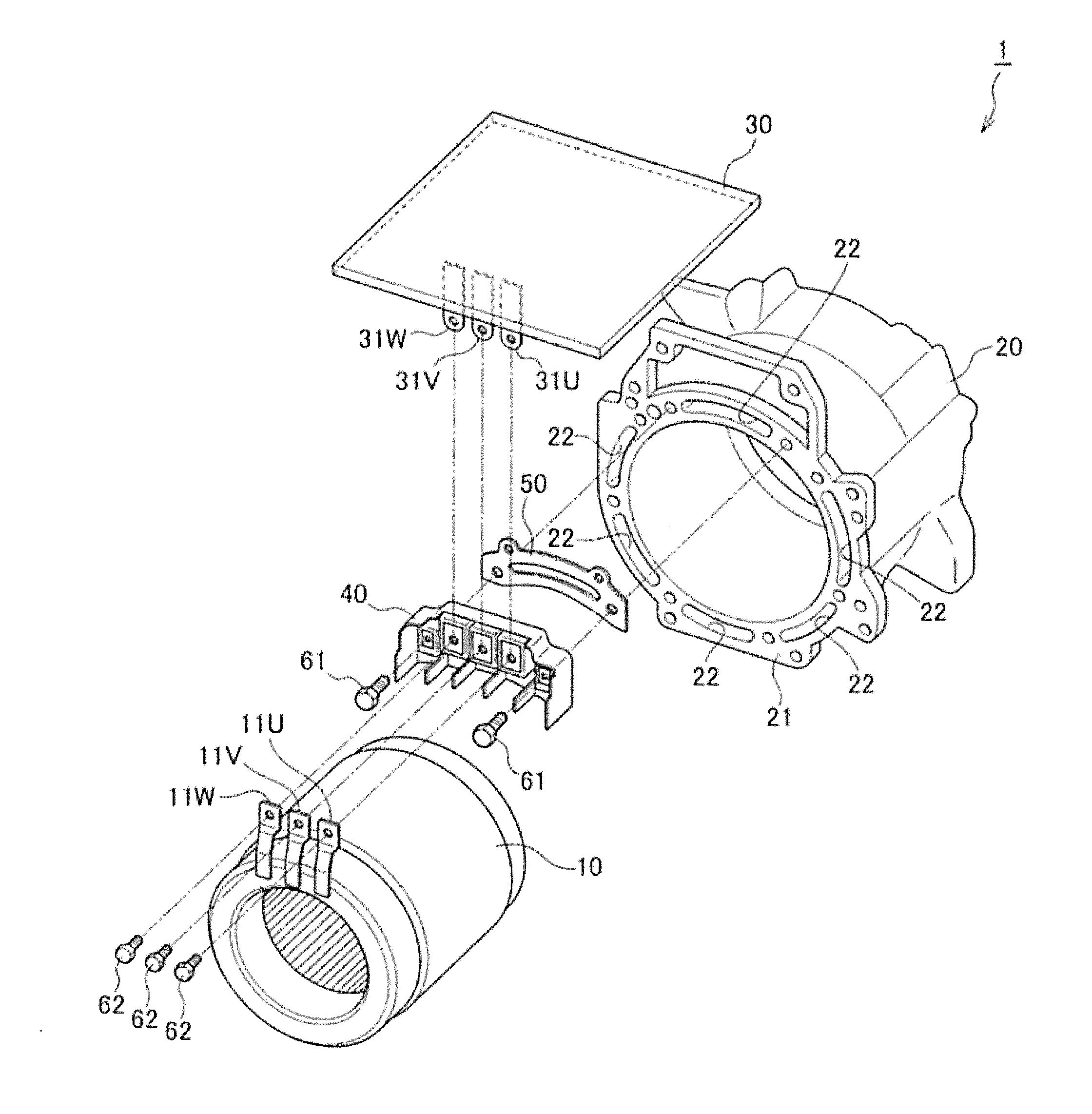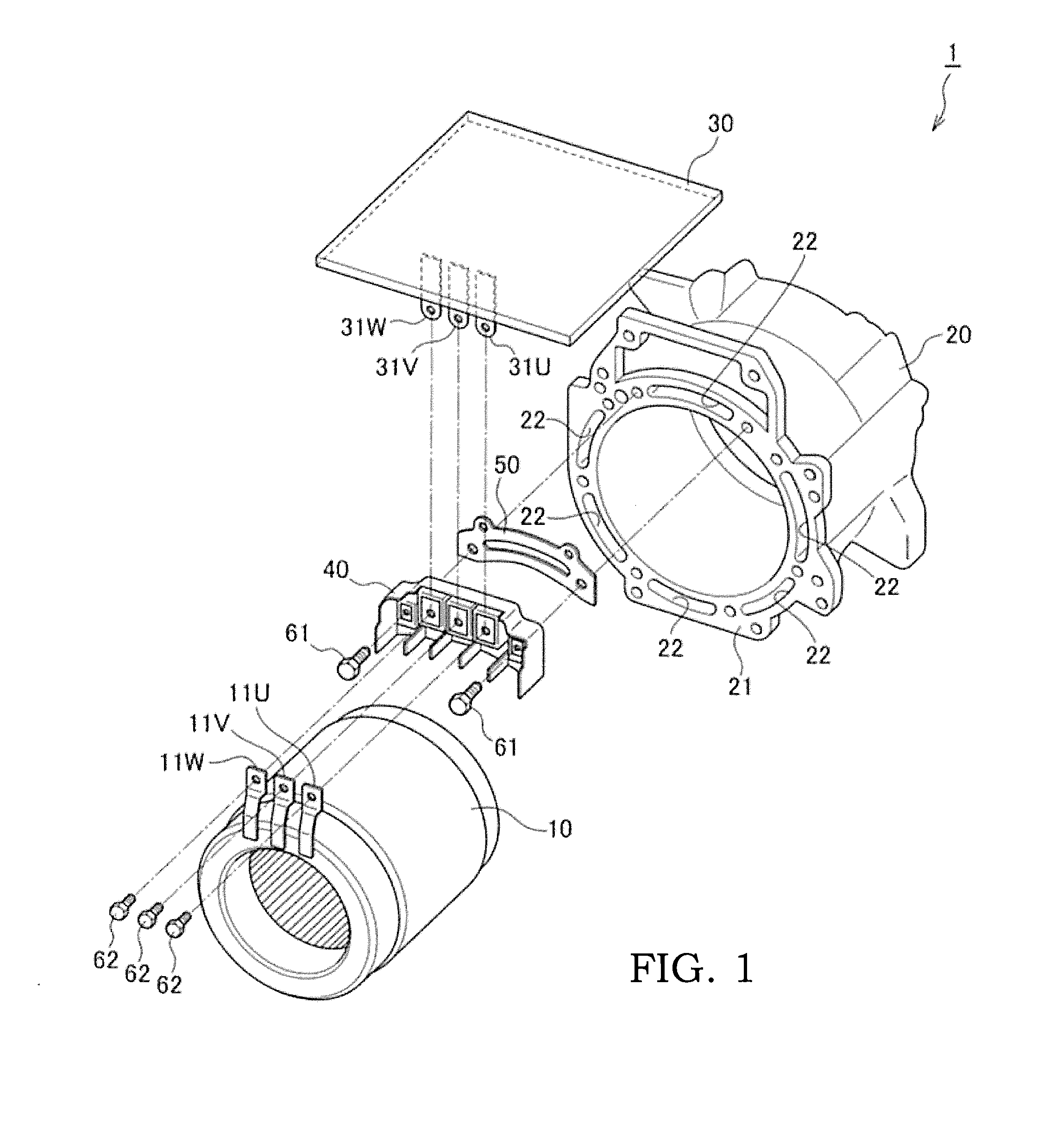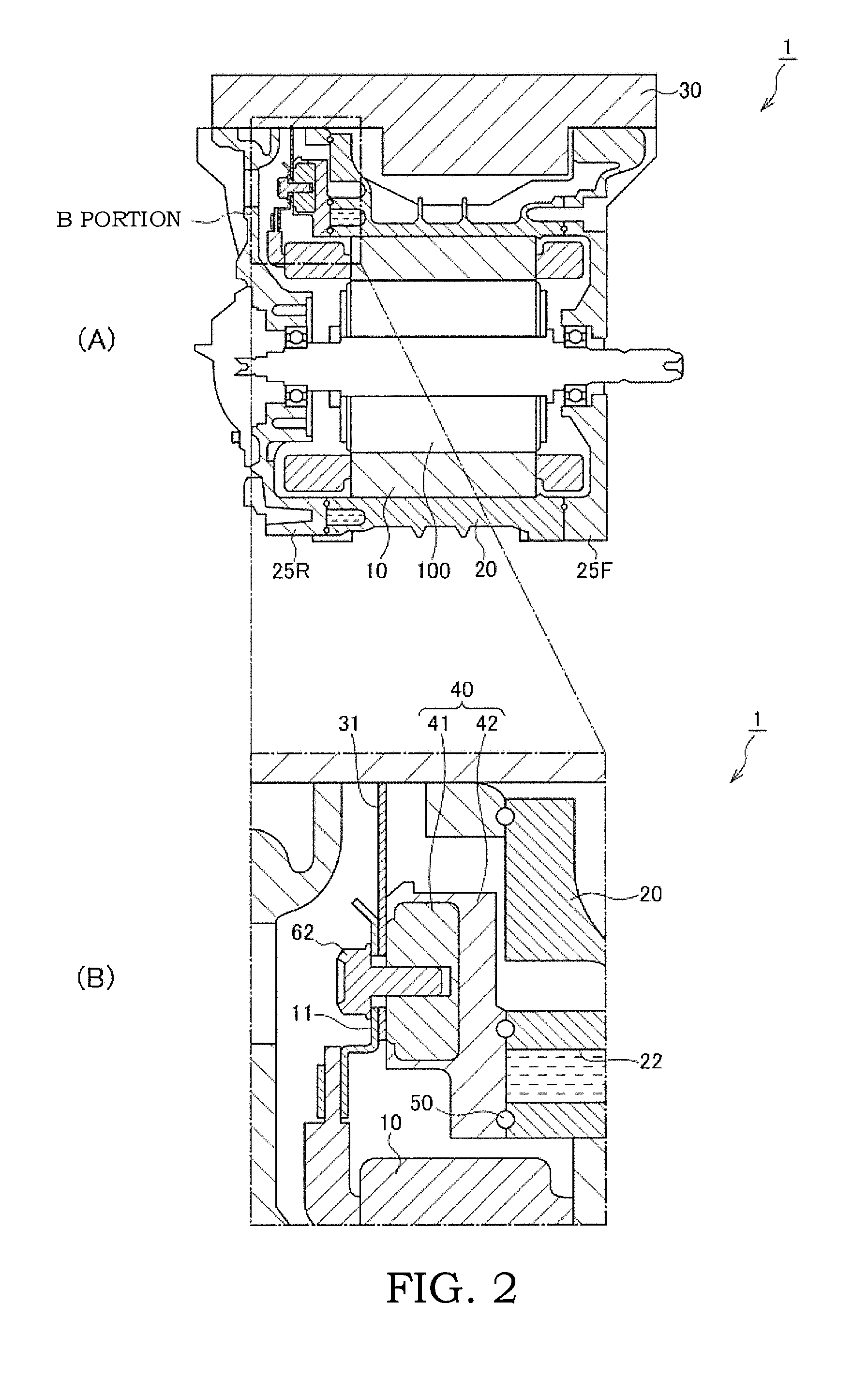Cooling structure for electric motor
- Summary
- Abstract
- Description
- Claims
- Application Information
AI Technical Summary
Benefits of technology
Problems solved by technology
Method used
Image
Examples
first embodiment
[0015]FIG. 1 is a perspective view illustrating major parts of a cooling structure for an electric motor according to the present invention.
[0016]A cooling structure 1 for an electric motor according to the present invention mainly includes a stator 10, a motor case 20, an inverter 30, and a terminal base 40.
[0017]The stator 10 is housed in the motor case 20 together with a rotor (not shown in the drawings). The stator 10 includes a U-phase motor power line 11U, a V-phase motor power line 11V, and a W-phase motor power line 11W. These motor power lines extend toward the inverter 30. In FIG. 1, since the inverter 30 is arranged above the motor case 20, these motor power lines extend upward. Further, as will be described later, the U-phase motor power line 11U is connected to a U-phase inverter power line 31U at the terminal base 40. The V-phase motor power line 11V is connected to a V-phase inverter power line 31V at the terminal base 40. The W-phase motor power line 11W is connected...
second embodiment
[0037]FIG. 4 is a view illustrating the cooling structure for the electric motor according to a second embodiment of the present invention, and is an enlarged view of the horizontal cross-section in the vicinity of the terminal base.
[0038]Hereinafter, the same reference numerals will be assigned to portions that perform the same functions as those explained above, and repetitive explanation will be omitted appropriately.
[0039]The terminal base body 42 according to the present embodiment includes a lid part 421 and a casting part 422.
[0040]The lid part 421 is made of metal. The lid part 421 is arranged so as to close the groove 22 of the motor case 20. An upper portion of the lid part 421 is formed so as to expand upward from a base thereof, and the casting part 422 is inserted into this wedge-shaped portion.
[0041]The casting part 422 casts the U-phase power line fixing portion 41U, the V-phase power line fixing portion 41V, the W-phase power line fixing portion 41W, and the wedge po...
third embodiment
[0043]FIG. 5 is a view illustrating the cooling structure for the electric motor according to a third embodiment of the present invention, and is an enlarged view of the horizontal cross-section in the vicinity of the terminal base.
[0044]The terminal base 40 according to the present embodiment includes an insulating member 44 sandwiched between the power line fixing portion 41 and the lid part 421. The insulating member 44 is a thin plate made of resin, for example.
[0045]In the configuration of the second embodiment, it is necessary to pour the resin for the casting part 422 even between the power line fixing portion 41 and the lid part 421. In order to secure flowability of the resin, a certain level of gap has to be provided between the power line fixing portion 41 and the lid part 421. Further, in order to secure strength of the resin between the power line fixing portion 41 and the lid part 421, it is necessary to provide a gap between the power line fixing portion 41 and the li...
PUM
 Login to View More
Login to View More Abstract
Description
Claims
Application Information
 Login to View More
Login to View More - R&D
- Intellectual Property
- Life Sciences
- Materials
- Tech Scout
- Unparalleled Data Quality
- Higher Quality Content
- 60% Fewer Hallucinations
Browse by: Latest US Patents, China's latest patents, Technical Efficacy Thesaurus, Application Domain, Technology Topic, Popular Technical Reports.
© 2025 PatSnap. All rights reserved.Legal|Privacy policy|Modern Slavery Act Transparency Statement|Sitemap|About US| Contact US: help@patsnap.com



